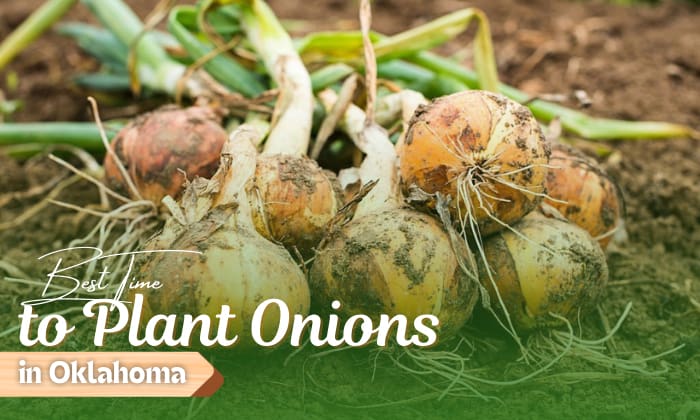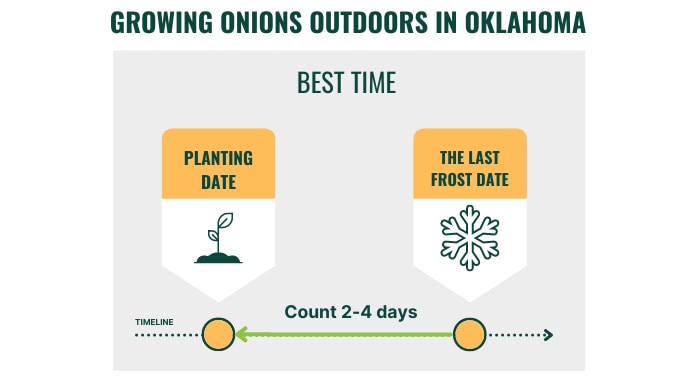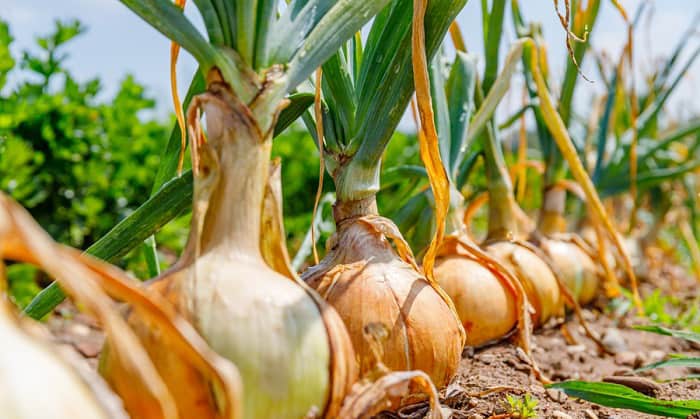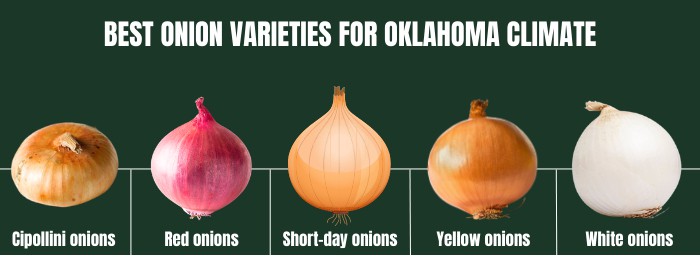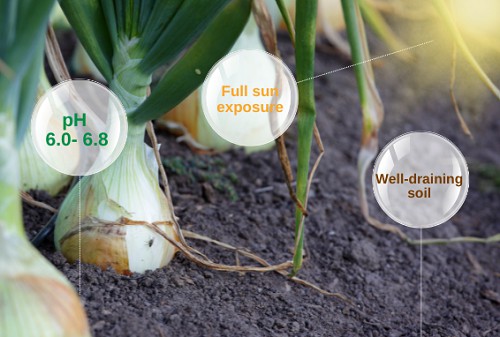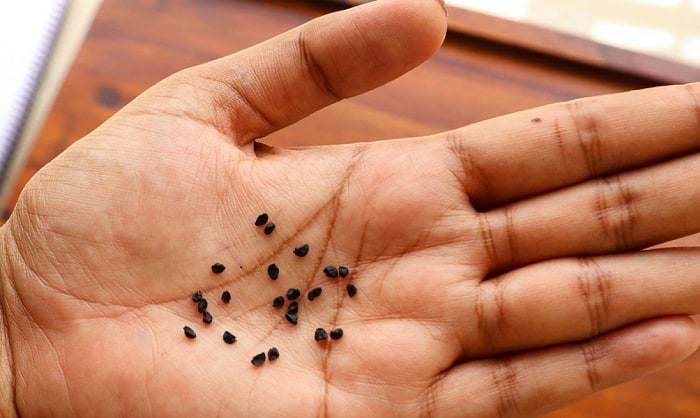Exactly when to plant onions in Oklahoma will depend on your USDA zone. The best onion planting dates for this state are in the spring, from February 15 to March 10, or in the fall, on September 1.
This article will be your comprehensive guide on the specific dates for growing onions, how to plant them depending on the method, as well as the most suitable onion varieties for Oklahoma and helpful tips to have a good harvest.
Table of Contents
Best Time to Plant Onions in Oklahoma
Any gardener worth their salt knows that determining the correct planting schedule for every fruit, crop, or in this case, vegetable is one of their top priorities. Onions, in particular, are cool-season crops.
While these bulbs are known for their ability to grow at almost any time of the year, you still need to remember that their tolerance extends only to light and moderate frosts.
With this, the general rule for Oklahomans is to plant onions outdoors 2-4 weeks before the last frost date.
Oklahoma, just like many states in the US, has more than one hardiness zone. In this case, Oklahoma has zones 6-8. To determine your region’s frost dates, check out this map to see which USDA zone you’re in.
While the following dates are only averages for each city, you can use them as a starting point for your planting seasons.
| City | Last Frost Date | First Frost Date |
| Ada | April 11-20 | November 1-10 |
| Altus | April 11-20 | November 1-10 |
| Ardmore | April 1-10 | November 11-20 |
| Bartlesville | April 21-30 | October 21-31 |
| Bethany | April 11-20 | November 1-10 |
| Bixby | April 11-20 | November 1-10 |
| Broken Arrow | April 21-30 | November 1-10 |
| Chickasha | April 11-20 | November 1-10 |
| Claremore | April 21-30 | October 21-31 |
| Del City | April 11-20 | November 1-10 |
| Duncan | April 11-20 | November 1-10 |
| Durant | April 11-20 | November 1-10 |
| Edmond | April 11-20 | November 1-10 |
| El Reno | April 21-30 | November 1-10 |
| Enid | April 21-30 | November 1-10 |
| Jenks | April 11-20 | November 1-10 |
| Lawton | April 11-20 | November 1-10 |
| McAlester | April 11-20 | November 1-10 |
| Midwest City | April 11-20 | November 11-20 |
| Moore | April 11-20 | November 1-10 |
| Muskogee | April 11-20 | November 1-10 |
| Mustang | April 21-30 | November 1-10 |
| Norman | April 11-20 | November 1-10 |
| Oklahoma City | April 11-20 | November 1-10 |
| Owasso | April 11-20 | November 1-10 |
| Ponca City | April 21-30 | October 21-31 |
| Sand Springs | April 21-30 | November 1-10 |
| Sapulpa | April 21-30 | November 1-10 |
| Shawnee | April 11-20 | November 1-10 |
| Stillwater | April 21-30 | October 21-31 |
| Tahlequah | April 21-30 | October 21-31 |
| Tulsa | April 21-30 | November 1-10 |
| Yukon | April 11-20 | November 1-10 |
Taking these into account, cities in the Zone 6 area can start planting onions around March 24, while those in zone 7 can garden from March 6 and finally, those in zone 8 can begin planting as early as February 28.
People tend to grow onion sets/starts because planting onion seeds takes longer. You’d need to sow your seeds indoors with an allowance of 8-10 weeks before your average last frost.
For zone 6, this is the 11th day of February, the 24th of January for zone 7; and the 18th of the same month for zone 8.
If you can’t garden in the spring, another option is to plant onions in the fall in September, four to six weeks before the first frost in Oklahoma (which often occurs in October and November).
Tips to Grow Onions Successfully in Oklahoma
To complete this Oklahoma vegetable planting guide, here are useful insights to raise your chances of a good yield:
- Cover onions with fleece to protect them from pecking birds.
- Save time weeding by using a weed-suppressing membrane.
- If you have to weed, use your hands to pull them, since onions have shallow roots.
1. Best Onion Varieties for Oklahoma Climate
Some onion varieties perform better in certain regional conditions. For starters, Oklahoma enjoys less rainfall than what most varieties need. Here are the best onions to grow in the Sooner State:
- Cipollini onions
- Red onions – Granex
- Short-day onions – Imperial Sweet, Texas 1015, Vidalia
- Yellow onions – Yellow Sweet Spanish, Grano 1015Y, and Walla-walla Sweet
- White onions – Crystal Wax, White Sweet Spanish
2. Preparing the Site
Onions love the following soil conditions:
- Well-draining soil
- Full sun exposure
- Either sandy loam or silt loam ground
- pH levels of 6.0 up to 6.8, with 0 being the maximum
- Rich in organic matter (compost, not manure)
3. Planting: Sets or Seeds
Onion sets save me more time, since they just take 80 days to mature, though they don’t really have the variety that onion seedlings offer. Here’s how to plant sets/starts:
- Gently push the onion sets 1-2 inches into the soil with the tips showing above ground.
- Keep them 2-6 inches apart.
Meanwhile, growing from seeds takes around 90 to 100 days before they’re ready for harvest. Here’s how to start seeds indoors:
- Sow onion seeds into trays filled with compost.
- Before you leave the tray in a sunny location (65-75°F) to germinate, top it off with a light layer of dirt.
- You can transplant outside after 1 week of acclimatization.
4. Caring and Maintenance
- To reiterate, Oklahoma has sparse rainfall, so you need to compensate and make sure your onions get about 1 inch of moistures every week and at least two waterings every seven days during dry spells.
- Fertilizer with high nitrogen content is beneficial for bigger bulb sizes and should be applied every 2 weeks after 3 weeks from planting.
5. Harvesting
- You can tell the onions have matured once they turn yellow and fall over.
- You can harvest onions when they turn brown, preferably in dry weather to prevent rot.
- Store them under 40 to 60℉.
Conclusion
Whether you choose to go with seedlings or sets, now you know when to plant onions in Oklahoma: in springtime or late fall. Each medium has its own pros and cons, depending on whether you prefer variety and cost-effectiveness or convenience and earlier harvests.
Feel free to experiment with different varieties, but for both newbie home gardeners and seasoned farmers, the key to a good harvest is to understand your site conditions and amend them to be suitable for onions. Most of all, make sure to enjoy the experience.

Hi, I am William – Floridayards’ digital content creator. My job is to find answers to all your concerns with thorough research and our team’s expert advice. I will also bring you honest reviews on the best products and equipment for raising your beautiful garden. Please look forward to our work!


